What's Flowering Right Now?
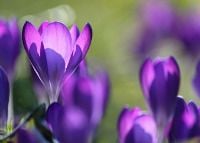)
Finally, spring's come around!
Soon those cold, dark and windy days will be a distant memory.
And what's the best thing about spring? Everything is coming to life and this is your time to spruce up your garden with colour, texture and vibrancy.
In this (timely) blog, I'm going to give you some suggestions on choosing the right plants so that your garden rocks your neighbourhood!
So here are my top 3 plants to add colour and vibrancy to your gardens.
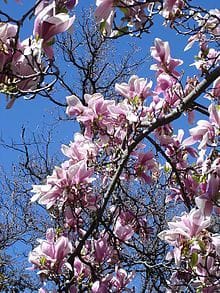 Magnolia x Soulangeana
Magnolia x Soulangeana
Magnolia x soulangeana, commonly known as saucer magnolia, is a deciduous hybrid magnolia (M. denudata x M. liliiflora).
It is the most commonly grown deciduous magnolia.
It's a broad shrub or small tree that typically rises to 4-8m tall with a rounded crown.
With large showy flowers that are fragrant and in a variety of shades of white, pink and purple, it will bloom in early spring.
Also known as Saucer magnolia, it's perhaps the most popular deciduous magnolia in cultivation today.
These hybrid trees are slowish growing, so will take some years to reach their full height.
They like to live in a temperate climate, thrive in well-drained soil and prefer morning sun, but will tolerate full sun provided they are well watered. Once mature, the plants are quite hardy.
It's very useful as a feature plant, however, will need protection from wind and prefers fertile moist soil.
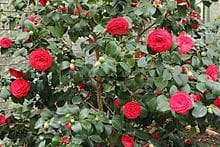 Camellia Japonica
Camellia Japonica
Camellia japonica, known as common camellia or Japanese camellia, is one of the best known species of the genus Camellia.
Sometimes called the Rose of winter, it belongs to the Theaceae family.
The flowers are in full bloom in June and July, with many continuing to bloom until August and even September, providing excellent material for vases.
The exquisitely formed flowers are probably at their best in winter, as they can be ruined by some of the warm days of late winter and early spring.
A shallow bowl of floating camellia blooms is pretty for indoor decoration in winter; a similar outdoor effect can be achieved in a birdbath.
Many will reach heights of 5-7m if unpruned, although some are naturally more compact.
They can be used in an informal woodland shrubbery or to create effective and substantial screens in the garden.
Lower branches can be removed and a more open canopy created by thinning some of the upper branches once the plant has matured.
Old Camellia can be rejuvenated to produce a similar effect, especially those encroaching on windows or pathways.
Camellia Japonica, especially those with pale-coloured flowers, need to be grown in partial or dappled shade.
Most are best shielded from hot afternoon sun and winds during the warmer months.
Most also need to be protected from direct morning sun in winter (up till midday), which can damage the flowers by burning them through the dew which collects on the petals at night.
Some of the bright red and bright pink cultivars, however, are able to withstand this effect.
Complete shade is not the best position for Camellia japonica to produce their flowers, as they need some filtered sun during the middle of the day in December and January in order that buds may be set for the following winter's display.
They flourish best in a free-draining, slightly acidic soil (pH 5.5-6) that is rich in humus.
 Acacia Baileyana
Acacia Baileyana
If you prefer native plants, then Acacia baileyana or Cootamundra wattle is for you.
It's a shrub or tree in the genus Acacia.
The scientific name of the species honours the botanist Frederick Manson Bailey.
It is indigenous to a small area of southern New South Wales in Australia, but it has been widely planted in other Australian states and territories.
Acacia baileyana is a small evergreen tree with domed canopy, it is fast growing and has a life span of 8 - 15 years.
It bears pollen rich, fluffy stamens of brilliant lemon yellow colour in June to August depending on latitude and exposure to cold winds.
Cootamundra Wattle prefers full sun, it will grow in part shade but will tend to be less dense.
It is tolerant to frost, 3rd line salt and drought.
This plant adds winter colour to a native garden and for the remainder of the year the foliage is great for contrast colour.
Will adapt to any soil conditions but does best in well drained soils.
You'll need to water it well during its first summer, prune after flowering to keep tidy and feed in autumn with blood and bone.
Enjoy your garden and remember, before anyone walks into your home, they see your garden first, so take the time to establish it and make sure it reflects who you are.
If you'd like some help in choosing your next plant or even if you'd like to know which plants would be best for your garden, contact Susan Read Landscapes, 0418 635781, for a no-obligation consultation.
| Posted in:Landscape designPlantsNative Plants |
How do you know you are buying a healthy plant?
)
Can you believe it, we're only weeks away from spring which is a great time to buy new plants for your garden.
Most nurseries are stocked with new plants and most are top quality.
But sometimes there are plants that aren't a good buy. They may be too old, damaged or diseased to thrive when you get them home.
To make sure you get good, healthy and thriving plants, I've put together some tips for you for choosing your new plants.
What to look for in choosing a healthy plant
When you're looking to buy a plant, pay close attention to its shape, over all condition and presentation before you buy.
If it's on the bargain table, leave it there!
Starting your garden with plants that are healthy and vigorous will give you a huge advantage.
Healthy plants will establish themselves faster and will require less fussing and maintenance. The faster plants become established in your garden, the sooner they will start to fill out and bloom or begin producing fruits for you.
At first glance, all the plants in the nursery look healthy, lush, and glorious. And usually they are.
However, with a few quick checks, you can prevent bringing home a lemon (unless you're buying a lemon tree that is!).
Take some time to look over the plant, before you introduce a problem into your garden.
Here are some tips to help you choose healthy plants.
The Quality of the nursery or garden centre
Stop and have a good look around the place. Look to see that the majority of the plants seem healthy and well cared for. If there are a lot of wilted or browned plants in one section, chances are that the rest of the plants may not be getting great care.
Foliage
Look, really look, at the condition of your plant. Are the leaves green, shiny and lush? Stay away from any plants that are wilting or yellowing. Did you know 'stressed plants' may not recover? This is especially important if you are buying annuals and vegetables.
Shape
Check out the shape of the plant. Is it compact and full, with multiple stems? Just because it's taller does not mean it's better. It could mean the plant has been straining for light and has grown thin and spindly.
 Insects & Disease
Insects & Disease
Look closely for signs of insects or disease. Check both sides of the leaves and the potting soil. Signs to look out for include: blackened areas, holes, spots, mushy areas, stickiness and distortions.
Root System
Roots are important, so don't neglect the roots. If the plant is pot bound and the roots are growing out of the bottom, the plant may be stressed and take time to recover. If there aren't many roots and the plant lifts out very easily, it was probably recently re-potted and could use more time to become garden ready.
Stem Damage
If the plant has a thick or woody stem, make sure there are no cracks or scars. Prior damage can weaken a plant.
Weeds
Weeds in the pot are competing with the plant for nutrients and to be honest, if there are some weeds in the pot, then that is a poor reflection on the nursery or garden centre as they have neglected looking after the plant. The last thing you want is introduce a new weed into your garden Mother Nature will take care of that for you!
Root Ball
When buying a balled-and-burlapped tree or shrub, the root ball should feel solid. If it appears broken, there's a good chance the roots have had a chance to dry out and the plant will suffer.
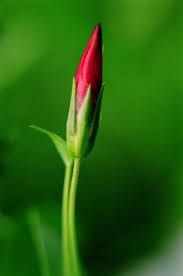 Buds & Flowers
Buds & Flowers
Although it's tempting to buy a plant that is already covered in flowers, plants in bud will transplant and thrive better than plants in flower. Besides, the existing flowers will fade quickly. You'll get a longer bloom time at home if you purchase a plant that is in bud.
Sale Plants
Plants on sale at the end of the season may be bargains, but check them carefully. They may have been sitting in that pot all for a long time and be root bound or they may have a lot of weeds hiding under the leaves at the base of the plant.
By taking some time to really check out next plant purchase will dramatically increase the chances of them taking to your garden when you bring them home.
Finally, when you do bring your new plant home, give them time to acclimatise themselves by placing them in the shade and then gradually bring them into their proper lighting.
Be sure to keep them well watered until they are ready to plant into the ground. It's best to plant them in the garden on an overcast day.
If you'd like some help in choosing your next plant or even if you'd like to know which plants would be best for your garden, contact Susan Read Landscapes, 0418 635781, for a non-obligation consultation.
| Posted in:Landscape designPlantsNative Plants |
5 Reasons why you should use a Landscape Design Architect
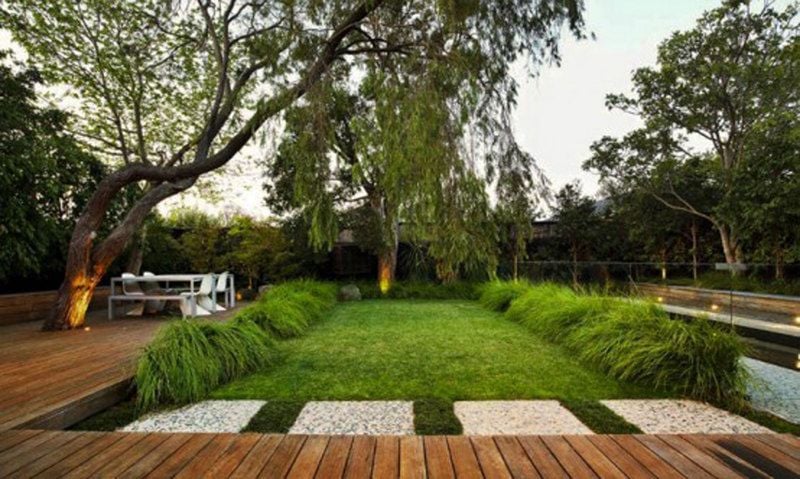)
It's amazing that when it comes to renovating or upgrading the interior of your home, people will most likely engage an interior decorator or at least someone with a good understanding of colours, design, textures and so on.
But, when it comes to your garden space, we don't seem to give it the same attention to detail as we do to interior decorating.
Why is this?
Probably the simplest reason is that many people don't know Landscape Architects exist and what they do.
Before we go on, we must understand the difference between a Landscape Designer versus a Landscape Architect.
Here's the key difference; although there is some overlap between the two, a registered landscape architect has more formal training and a broader range of capabilities than a garden or landscape designer.
The landscape architect's design process is comprehensive and brings a high level of depth and detail to the work.
Landscape Architects understand both the theory and practice of harmonious, sustainable and aesthetically pleasing designs.
Landscape Architects are experts in the areas of:
- Site analysis & engineering
- Resolving complex grading and drainage issues
- Conceptual designs & construction drawings
- Design documentation for outdoor structures and hardscape features
- Construction methods and materials
- Understanding plant materials in the context of local ecosystems
So you can see a Landscape Architect offers a more comprehensive level of service which can make the difference between a beautiful and sustainable outdoor space and a mishmash of plants and trees which can be an eyesore.
Okay, now that we know what a Landscape Architect is and does, why should you use one?
Here are 5 reasons why you should use a Landscape Architect for your next garden and outdoor living space renovation.
No 1 - Increase the value of your home
A landscape architect is one of the best investments for your home, adding as much as 15 percent to its value over comparable houses. A landscape architect is well equipped to design an outdoor living space that will not only add value, but also extend your living space while allowing you to enjoy all that nature has to offer.
 No. 2 - It starts with planning
No. 2 - It starts with planning
A big advantage of hiring a Landscape Architect is that they are trained to think about landscapes as systems. They will assess your property's problem areas as well as possibilities and create a solid plan that addresses both the big picture and exact details of how your landscape will look.
No. 3 - Low maintenance gardens using native plants
If you're looking for low-maintenance gardens, native plants are the way to go and a Landscape Architect will incorporate them into your landscape design. Native plants reduce water costs and often reduce chemical applications and insects like bees and butterflies flourish among them, adding to the natural beauty, peace and connection with the environment.
No. 4 - Project management
A Landscape Architects will remain involved with the construction of your outdoor garden space and will follow through. What the homeowner may consider a long weekend project might actually take weeks to complete!
 No. 5 - Gardens and outdoor spaces that are unique and reflect your style
No. 5 - Gardens and outdoor spaces that are unique and reflect your style
A Landscape Architect will deliver a finished project that not only will you love but also comply with regulations and codes. It will be a special place that you and your family and friends will enjoy for years to come and will be as unique as you are.
For your next garden renovation, not matter how big or small, consider using a Landscape Architect as the first step not only will you have the best possible outcome, you'll more than likely save money in the long run.
Contact Susan Read Landscapes, 0418 635781, for a non-obligation consultation for your garden/outdoor space makeover.
| Posted in:SustainabilityLandscape design |
Rainwater tanks - are they 'a nice to have' or a 'must have'?
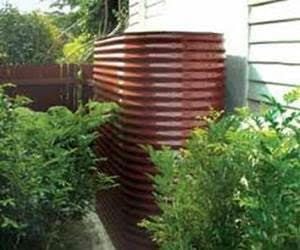)
Okay, so rainwater tanks may not be the most stunning or architecturally appealing piece of equipment in a landscape design.
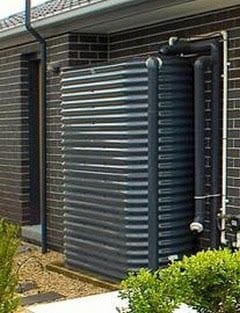 But, have you stopped to consider having one installed on your property?
But, have you stopped to consider having one installed on your property?
Aside from homes in rural areas, those living in the city can also benefit greatly from these water storage solutions. In this post, I'd like to suggest to you that rainwater tanks are really a MUST HAVE water storage solution for urban areas and not just for rural properties.
First, what is a rainwater tank (many people don't quite know what they are or what they do)?A rainwater tank is a water tank used to collect and store rain water runoff, typically from rooftops via rain gutters.
Rainwater tanks capture rainwater from your roof and store it for later use. You can then use the stored water around your home and garden.A properly installed and working rainwater tank can save up to 40% of your drinking water supply.
This can add up to about $218 a year - or 96,000 litres!A typical rainwater tank in greater Sydney will cost at least $2,000-$3,500 to buy and install. This will depend on the size of the tank and complexity of the installation.
As well as buying the tank, you may have to hire a plumber and an electrician.What do you need to consider?
An ideal rainwater tank installation for an average Sydney home would:
- store at least 2,500 litres of rainwater
- be connected to over 75% of the available roof area
- have an energy efficient pump and distribution system
- supply rainwater to at least one toilet and the clothes washing machine
- provide a fail-safe water supply that uses a mains switching device connected to the drinking water supply.
Right, now that we know what a rainwater tank is and what it does, why is this a MUST HAVE for my home in the burbs?
Here are 5 reasons why you should have rainwater tank.
No. 1 Save money on your water bill
Water consumption at home can be costly, especially if you have a big family. Constant flushing of toilets, for instance, amounts to as much as 30 per cent of your utility bill. But that's not all. Take note how often you and members of your household use water for showering, general cleaning and household chores. Incorporating the use of rainwater in your daily life can greatly help reduce your water bill.
No. 2 Blended designs
Rainwater tanks do not have to be an eyesore - in fact, gone are the days when barrels and bulky tanks were your only options. Now, you can choose from thousands of different sizes and types to fit your space, including slim line designs that come in a range of colours to match and fit in with your landscape. You can also fit your tanks to form part of a landscape feature. If you have limited space, an underground storage solution might be perfect for your needs.
No. 3 Less restrictions
Climate change and other environment-related changes can mean water shortage, leading to government-imposed restrictions remember when we were restricted on how and when we could use water? This can be a problem, especially for households that need to consume more than average users. Collecting rainwater though, can help solve this problem. Not only will you have more than enough for daily hygiene use, you'll also have some for extras like filling a small-sized pool.
No. 4 Save water on everyday use
Have you ever looked at all the appliances in your home that need water in order to operate? From the washing machine to the dishwasher, it's no wonder your utility bills can skyrocket. With these appliances, you're not only paying for the energy consumption, you also need to use water every time you use them. By using rainwater that you collected for washing the car and windows, doing your laundry, watering the plants in your garden, cleaning the house and more, you'll end up saving plenty of money over time.
No. 5 It's good for the environment
We can all play our part in doing some good for our environment. Clean water is one of our most precious resources. To help reduce the impact on our environment, conserving water is a must. You can do this by checking for leaks, replacing older appliances like washing machines and dishwashers, planting climate-appropriate flora, and of course, installing a water tank for your home. By doing all these, you'll be doing your bit for the environment and it'll feel good as well!
So there you have 5 reasons why a rainwater tank should be a MUST for your home.
Susan Read Landscapes can help with your landscaping projects as well helping you decide and choose which rainwater storage solution is best for your needs.
Contact Susan Read Landscapes today for a no-obligation consultation or call on 0418 635781.



